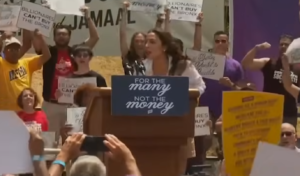Trump’s Executive Order Shocks Nation: Department of Education Faces Closure!
In a move that has sent shockwaves across the United States, President Donald Trump has signed an executive order directing the dismantling of the U.S. Department of Education. This unprecedented action aims to transfer educational authority back to the states, fundamentally altering the landscape of American education.
Understanding the Executive Order
President Trump’s executive order mandates the gradual closure of the Department of Education, shifting all educational responsibilities to individual states. The administration believes that state and local governments are better equipped to handle educational policies tailored to their specific populations.
Key Points of the Executive Order:
- The executive order calls for a phased closure of the Department of Education.
- Federal education funds will be redistributed directly to states.
- Programs previously overseen at the federal level will transition to state control.
- The order is expected to face legal challenges due to constitutional concerns.
Table: Federal vs. State Control of Education
| Aspect | Federal Control (Current) | State Control (Proposed) |
|---|---|---|
| Funding Allocation | Managed by the U.S. Department of Education | States distribute funds independently |
| Curriculum Standards | National Common Core guidelines | State-specific curriculum decisions |
| Special Education Programs | Federally mandated policies | States determine policies and funding |
| College Student Loans | Managed by Federal Government | Responsibility transferred to SBA |
Potential Impacts on Education Programs
Supporters argue that decentralization allows for more personalized education strategies, but critics warn of potential funding gaps and loss of oversight on critical programs.
Major Concerns:
- Title I Grants: Schools in low-income areas rely on these federal funds.
- Special Education (IDEA): Federal oversight ensures consistency across states.
- Higher Education: Federal student loan services could face major disruptions.
Legal Challenges and Opposition
Many experts believe that eliminating a federal agency through executive order alone is unconstitutional. Several advocacy groups and state attorneys general have already announced lawsuits challenging the decision.
Arguments Against the Order:
- Legal Authority: The Department of Education was established by Congress in 1979; dissolving it requires legislative action.
- Disruption to Students: The transition could lead to inconsistencies in policies affecting millions of students.
- Equity Concerns: Federal policies ensure uniform educational opportunities for disadvantaged communities.
Impact on Student Loans
One of the biggest concerns is the fate of the federal student loan program. The Department of Education currently manages a $1.6 trillion student loan portfolio. Under the executive order, this responsibility would shift to the Small Business Administration (SBA), raising concerns about loan management efficiency.
Potential Risks:
- Increased processing delays for student loan applications.
- Possible changes to income-driven repayment plans.
- Uncertainty regarding loan forgiveness programs.
State-Level Reactions
Reactions among state governments have been mixed. While some states support the move for greater autonomy, others fear the financial burden and lack of federal oversight.
Mind Map: State Reactions to the Executive Order
National Reaction
|
---------------------------------
| |
Support Opposition
| |
- Greater local control - Funding uncertainty
- Less bureaucracy - Special education concerns
- State flexibility - Student loan disruptionsConclusion
This executive order could drastically reshape American education. While the intent is to give states more power, the risks include financial instability, legal hurdles, and possible negative impacts on students. As legal battles unfold, the future of the Department of Education remains uncertain.





